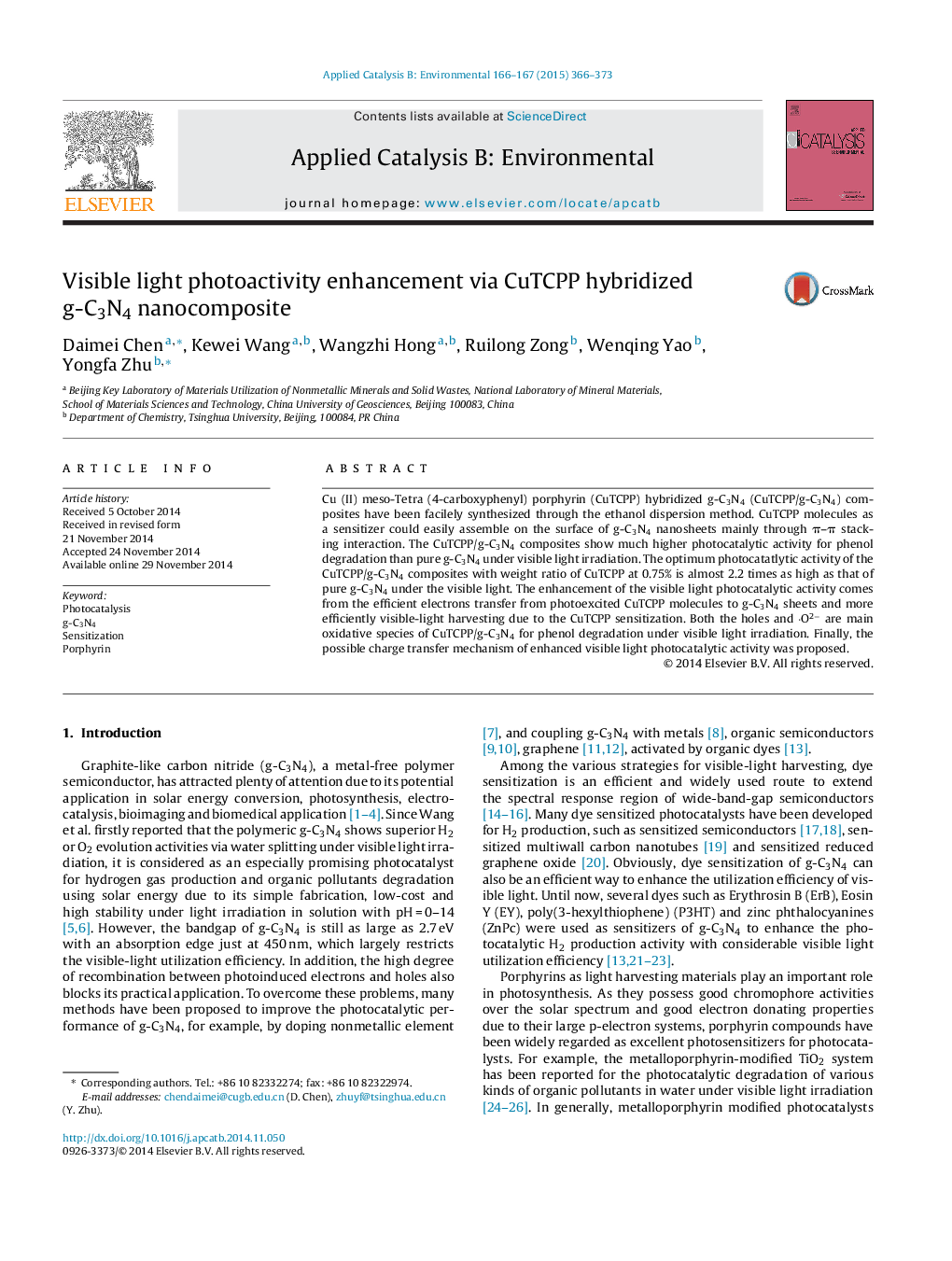| Article ID | Journal | Published Year | Pages | File Type |
|---|---|---|---|---|
| 45730 | Applied Catalysis B: Environmental | 2015 | 8 Pages |
•CuTCPP/g-C3N4 composites were prepared via ultrasonic dispersion method.•CuTCPP molecules easily hybridized with g-C3N4 mainly through π–π stacking interaction.•These composites show much higher visible-light photocatalytic activity than pure g-C3N4.•The enhanced visible light activity is due to the efficient electrons transfer from CuTCPP to g-C3N4.•CuTCPP sensitization can expand the visible light absorption of g-C3N4.
Cu (II) meso-Tetra (4-carboxyphenyl) porphyrin (CuTCPP) hybridized g-C3N4 (CuTCPP/g-C3N4) composites have been facilely synthesized through the ethanol dispersion method. CuTCPP molecules as a sensitizer could easily assemble on the surface of g-C3N4 nanosheets mainly through π–π stacking interaction. The CuTCPP/g-C3N4 composites show much higher photocatalytic activity for phenol degradation than pure g-C3N4 under visible light irradiation. The optimum photocatatlytic activity of the CuTCPP/g-C3N4 composites with weight ratio of CuTCPP at 0.75% is almost 2.2 times as high as that of pure g-C3N4 under the visible light. The enhancement of the visible light photocatalytic activity comes from the efficient electrons transfer from photoexcited CuTCPP molecules to g-C3N4 sheets and more efficiently visible-light harvesting due to the CuTCPP sensitization. Both the holes and ·O2− are main oxidative species of CuTCPP/g-C3N4 for phenol degradation under visible light irradiation. Finally, the possible charge transfer mechanism of enhanced visible light photocatalytic activity was proposed.
Graphical abstractFigure optionsDownload full-size imageDownload as PowerPoint slide
